Further, while factory resetting your laptop, you can choose between keeping your files and removing everything. However, before you start, you must be sure of what you want to remove and what you want to keep, as it may cost you critical files you may want later.
Why You Need to Factory Reset Your Laptop?
There could be multiple reasons why you want to factory reset your laptop. Usually, people do it before giving it to their friends and family for fresh use. Other possible reasons behind factory resetting a laptop could be a slow-running PC, malfunctioning apps, malware infection, or system errors like ‘Could not find the recovery environment’andWindows 10 Preparing Automatic Repair.
Factory Reset helps your system run a little faster. It also helps remove unwanted files, applications, malware, and previous settings, making it ready for resale or giving away!
如何工厂复位的笔记本电脑吗?
Irrespective of the reasons, you can reset your laptop following the below-mentioned steps.The following steps apply to all major brands, including Dell, HP, Asus, Acer, Lenovo, and Sony VAIO, running Windows Operating System OS.
Method 1: Factory Reset through Settings
Let’s start resetting your laptop right away!
- OpenSettingsby pressingWindows + Iand then go toUpdate & Security.
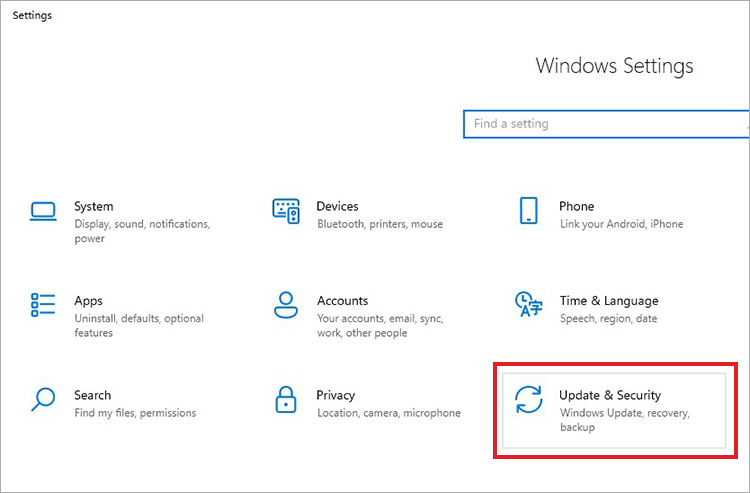
- Next, locate and clickRecoveryfrom the left panel.
- ClickReset PCunder theReset this PCoption.
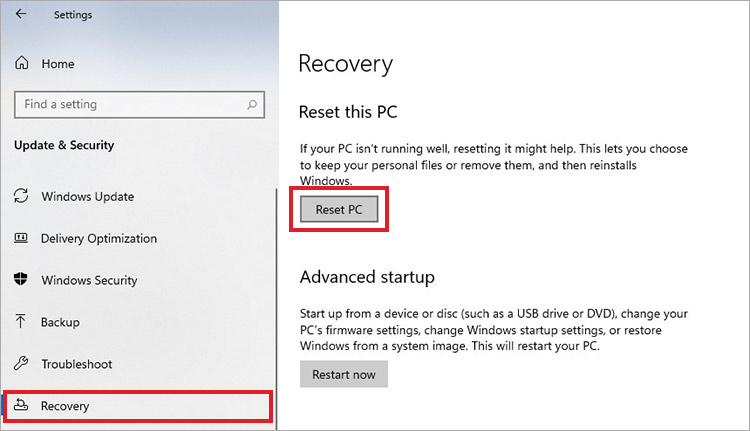
On the following prompt, you’ll get two options on theReset this PCwindow:
- Keep my files and
- Remove everything
You can select any of these options, depending on your needs. However, irrespective of the choice selected, the installed applications will be deleted, and the settings will revert to their default status.
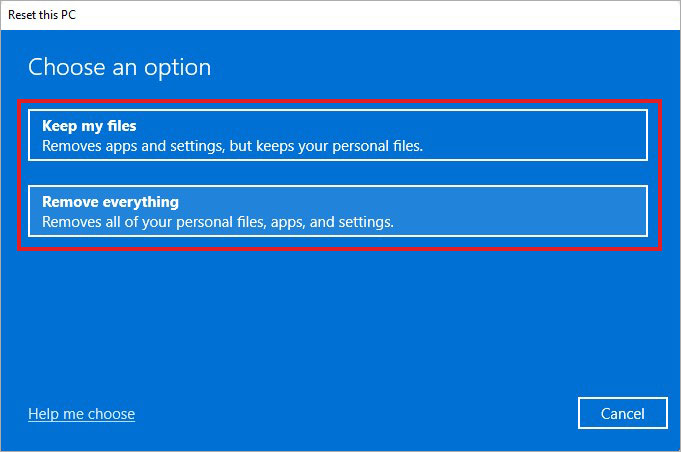
- On the following prompt, you can choose betweenCloud downloadandLocal reinstall.
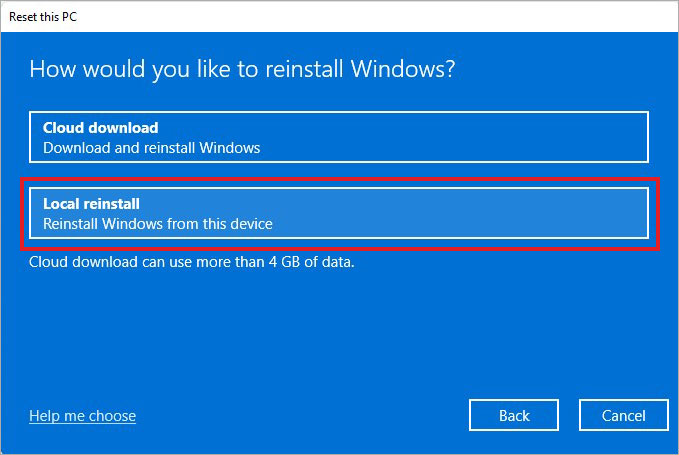
- Next, you’re shown the current set settings and the option to change if desired.
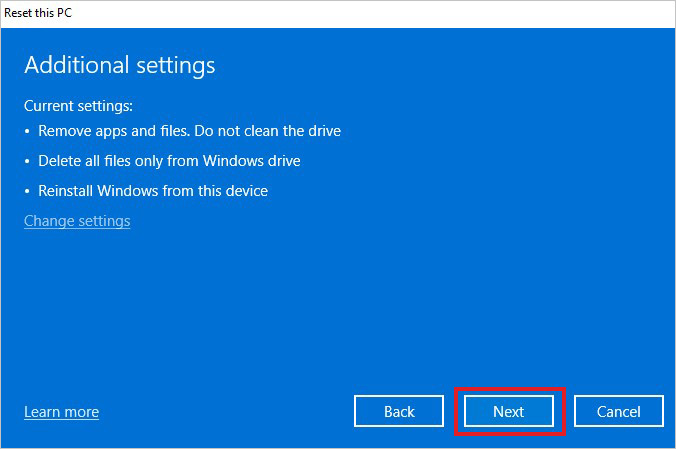
- You can clickChange settingsand selectClean data, Delete files from all drives,orDownload Windowsoptions.
| Suggestion:If you plan to give away your old laptop, proceed with the ‘Delete files from all drives’option. It will make accessing your data difficult for a new user. ClickConfirmto proceed. |
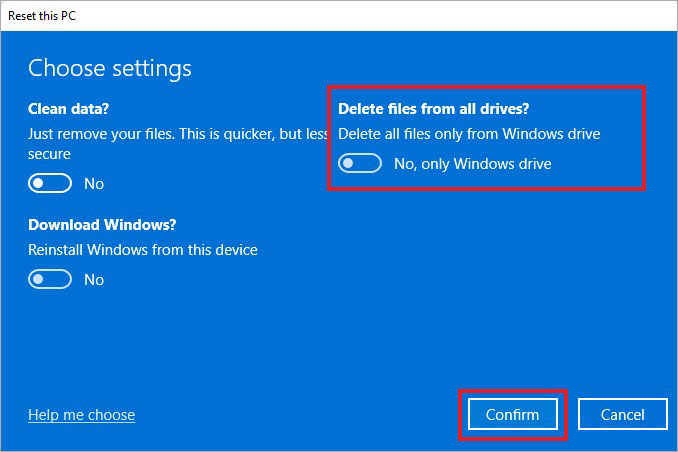
- Further, proceed with clickingNext.
- ClickResetto complete the process.
- Your system will restart and initiate the factory reset process.
- It may take a few minutes to reset. Once done, your system may show theContinueoption, and you’ll be ready to reuse your system.
Method 2: Factory Reset through Windows RE
If you cannot boot your system normally but still want to reset your system, you’d need to enter Windows Recovery Environment (RE). Once you reach Windows RE, you can factory reset the laptop and fix all the issues you’ve dealing with on your device. Follow the given steps:
- Turn on your system and reboot it.
- When you see the Windows logo or dots scrolling on the screen, press the Power button to turn the system off.
- Repeat these steps thrice, after which you should be in Windows RE.
- There, clickAdvanced options > Troubleshoot > Reset this PC.
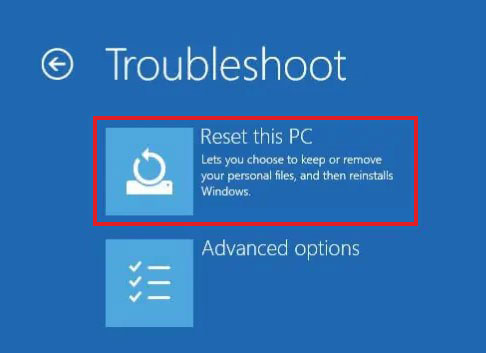
- Next, select eitherKeep my filesorRemove everythingoption.
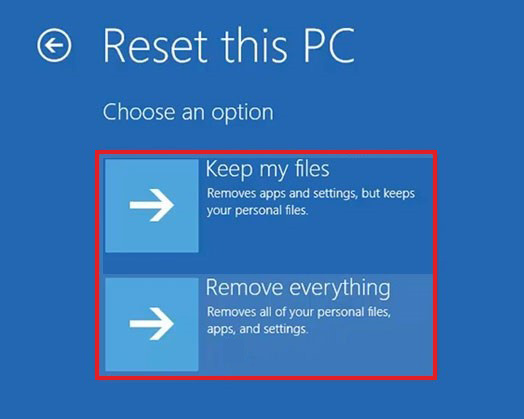
- SelectCloud downloadorLocal reinstallon the following prompt.
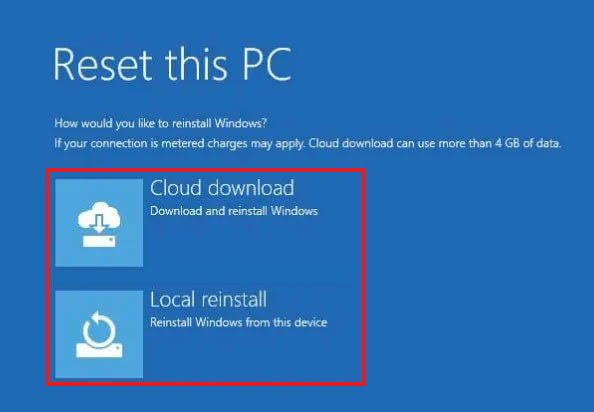
- Next, choose ‘Only the drive where Windows is installed’option. This will wipe all the data present on the selected drive.
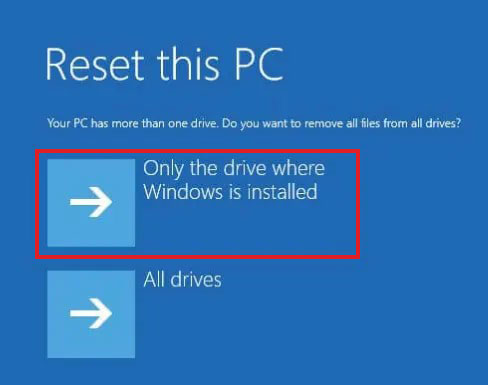
| Suggestion: Choose ‘All drives’if you want to discard your system. |
- On the next prompt, select betweenJust remove my filesandFull clean the drive. Where the former option will quickly erase data, and the latter will perform a secure data erasure that might take several minutes to hours.
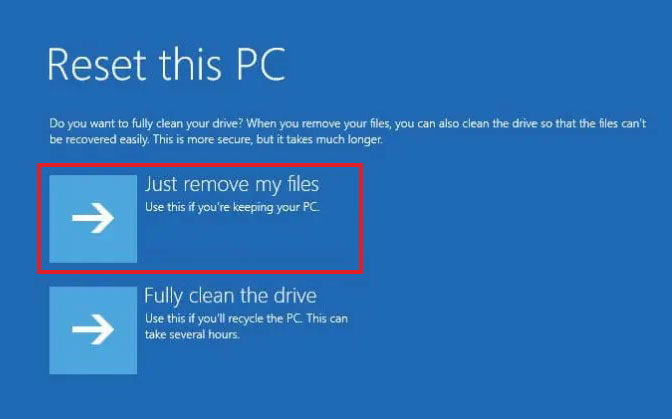
- Finally, review the settings and then clickReset.

- It will initiate the factory reset process as per the selected settings.
Perils of Factory Resetting Your Laptop
Out of all the advantages, there is one risk with the factory reset process, i.e., Data Loss. When you’re done resetting your PC, everything on your system will be restored to its original state, removing all the user-installed app data, accounts, settings, and personal data from the laptop’s storage.
Therefore, it’s always recommended to have a backup of your data. However, if there’s no backup available, don’t worry! You can still recover your data. How? Let’s find out!
How to Recover Data after Factory Resetting the Laptop?
Even if you have performed a factory reset and lost your data, you can still recover it using a powerful Windows data recovery software likeStellar Data Recovery. It is an easy-to-use DIY data recovery tool that supports recovery from Windows PCs, laptops, and supported storage media drives. The software can retrieve files from a formatted, corrupted, or factory-reset laptop or PC. All you need to do is select what to recover, scan the location/drive, and recover the files and folders to the desired location.
Tips To Safeguard Your Data against Data Loss
最好的方法来保护你的数据gainst loss is Data Backup. Irrespective of whether you factory reset your laptop before giving it away or to fix a system-related error or malware infection, regularly backing up your laptop is a surefire way to keep your data intact. Depending on your needs, you can keep your backup on cloud services, such as DropBox, Google Drive, etc., or an external hard drive.
Moreover, if the backup is incomplete or corrupted, keep a powerfulWindows recovery softwarehandy to recover data after resetting your system.
Frequently Asked Questions
1. How do I completely factory reset my HP laptop?
You can follow the steps discussed in this article to learn how to factory reset your HP laptop. However, before you start, back up your system and check for the Windows version you’re using. You can refer tothis guide to reset your HP laptop.
2. How do I factory reset my Lenovo Ideapad?
You can follow the given steps to factory reset your Lenovo laptop:
- OpenSettingsand go toUpdate & Security.
- ChooseRecovery > Get Startedunder Reset this PC.
- Next,Remove everything > Remove files and clean the drive > Reset.
The laptop will be reset.
3. How to perform a hard reset on a Dell Computer?
You can perform a hard reset on a Dell computer by following the given steps:
- Turn off the computer and disconnect the AC adapter (laptop users) and power cable (for desktops).
- If your laptop battery is removable, remove it.
- Remove all the devices connected to your system, such as USB drives, printers, webcams, and media cards SD/x).
- Hold the power button for at least 15-20 seconds to drain the residual power and connect the power source to the system.
- Finally, reboot your system.















